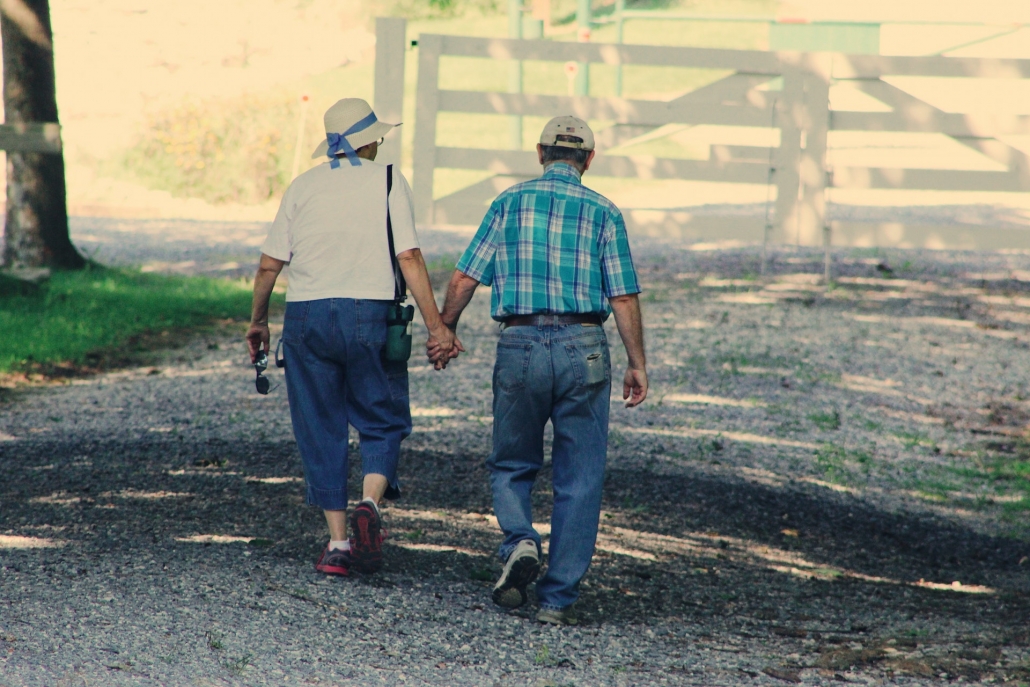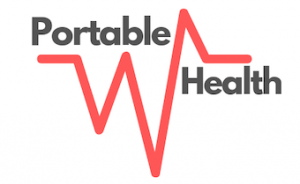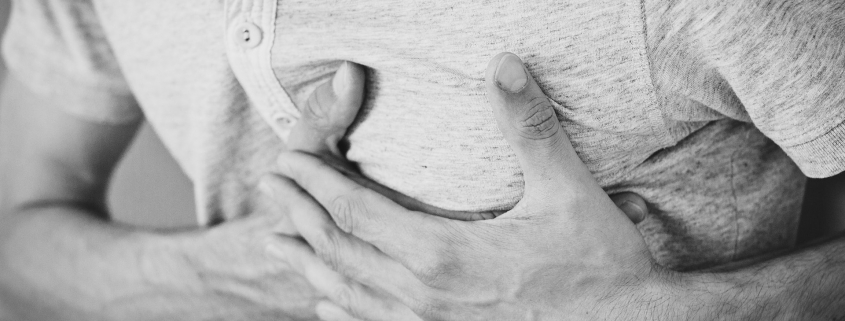A heart attack, or Myocardial Infarction (MI), occurs when the arteries supplying the heart muscle are blocked by a build-up of plaque that then breaks down and forms a clot. The clot prevents adequate blood supply from reaching the heart, causing damage to the muscle. If the clot is not treated swiftly then the damage can become permanent. It is usually accompanied by chest pain, tightness and pain shooting down the left arm although symptoms can differ from person to person.
In 2017 heart attacks claimed the lives of 21 Australians each day and it is estimated that 430,000 Aussies have had a heart attack at some time in their life. Cardiac disease is the biggest killer in Australia. However, with developments in medicine, more people are surviving heart attacks and living through recovery. It is therefore important to look at the use of exercise and nutrition as part of rehabilitation and prevention of further cardiac events.
Historically, patients who had experienced a heart attack were placed on six weeks of bed rest; however, we now know this is possibly the worst approach they could have taken! Obviously, patients still need to rest and recuperate for a short period immediately after a heart attack, and will probably spend one or two nights in hospital while they are stabilised; however, it’s important for them to stay on their feet. Gentle walking is the best choice of exercise with gradual increase in distance, time and pace.
Once a patient has been medically stabilised and is deemed safe for discharge home, they can start looking forward on the road to recovery. They are likely to need assistance initially for activities of daily living and it’s helpful if there are family members or friends able to stay with them. Try to limit visitors initially to short visits to avoid fatigue, and plan your day and prioritise any tasks and chores. It is important to avoid any heavy exertion while the heart muscle is recovering.
In the unfortunate event of a heart attack causing a patient to go into cardiac arrest, where the heart stops beating, they may experience what’s known as “down time,” where there is a loss of oxygen supply to the brain. Patients can still recover and do well following this, however there may be residual deficits and other rehabilitation considerations if this has occurred.
Exercise After A Heart Attack
All patients recovering from a heart attack should look at incorporating some exercise into their daily routine. Not only is exercise safe for heart attack patients but it has many benefits for helping to prevent further cardiac events.
Start small with something gentle and build up gradually, especially if you are somebody who is not used to exercising. Don’t try to do too much to start with as you may injure yourself or place too much strain on the heart muscle while it is still recovering. Gentle walking is a great choice to start with as it can be progressed or regressed as needed.
Aim for 30 minutes of physical activity every day, this can be broken down into manageable portions of 10 minutes, three times per day, especially initially while getting started. The 30 minutes can be a mixture of strength, cardio and stretching activity but to improve cardiovascular fitness it’s best to incorporate some form of aerobic exercise where you get out of breath. This helps to strengthen the heart muscle and helps to control blood pressure.
Initially it is wise to exercise under the guidance of a professional, such as an exercise physiologist or physiotherapist.
Precautions
If you experience any chest pain while exercising or other symptoms that you identify with your previous heart attack (e.g. shooting pain down the arm or tightness across the chest) then stop exercising immediately. Always carry your angina spray/tablet if you have it prescribed and take it promptly when needed. Seek advice from your doctor or call 000 immediately if it’s an emergency. No exercise should cause chest pain, so don’t try and push through the pain thinking it will go away.

It’s important to start moving again as soon as practical. Start by walking regularly at a casual pace and gradually increase your speed over time.
Cardiac Rehabilitation
Most hospitals run a 6-10-week program known as Cardiac Rehabilitation which covers education on many aspects of cardiac health as well as exercise. Often a cardiac rehabilitation nurse will visit you in hospital before going home to discuss your suitability for the program and potentially book you in for an assessment.
It is important to start with an assessment to gain baseline fitness measurements including blood pressure and heart rate (both pre-and post-exercise) and then perform a six-minute walk test. Cardiac rehab is a group-based program with the benefit of peer support making it more enjoyable as well as patients being able to share experiences and tips for living with heart disease. Being able to exercise in a supervised environment helps to increase confidence with exercising and teaches participants how far they should exert themselves safely. After the program patients are reassessed, at which point they hopefully will see significant improvements in both physical fitness, heart rate and blood pressure.
Other chronic conditions have adopted a similar approach (e.g. pulmonary rehabilitation) as they are an effective method of treating life limiting conditions. By increasing awareness of the disease and improving physical fitness of patients they can hopefully prevent the need for cardiac surgery or a further heart attack by improving the health of the arteries. If cardiac surgery is required, then it is beneficial to improve exercise tolerance beforehand to help improve surgical outcome and recovery.
Once cardiac rehabilitation is completed a great option is to find a local Healthy Heart walking group. The Heart Foundation of Australia website has a list of all walking groups in your local area or you could even start your own. Another recommended initiative is parkrun, a free weekly Saturday morning 5km walk/run in many locations throughout Australia. Run by volunteers, it is suitable for all paces and fitness levels and there is always a tail walker bringing up the rear so you will never be the last person over the finish line.
With any exercise regime, it is always important to set some goals as it helps to increase motivation. Start by identifying small, attainable targets and update them frequently. A lot of patients find it helpful to start an exercise diary and one of the most effective motivators is to get social by recruiting friends and family members or work colleagues to join you on your fitness crusade.
Nutrition
Even for patients who are a healthy weight and not needing to lose weight, it’s advisable that you consider your diet and ensure that you’re making the healthiest possible food choices for your heart.
Several diets have been shown to work well with reducing the effects of cardiac disease, one being the DASH (Dietary Approaches to Stop Hypertension). This diet assists to lower or control blood pressure, which is a significant contributing factor to cardiac health. It consists mainly of vegetables, fruits and low-fat dairy products, as well as whole grains, fish, poultry and nuts. Blood pressure has been found to usually be lower in people who follow a vegetarian or vegan diet, as excessive consumption of red meat can cause high blood pressure and increased cholesterol. Preference should also be placed on foods low in sodium.
The Mediterranean diet is another diet that has been shown to benefit cardiac health. Similar to DASH, it consists of fresh fish and vegetables, healthy fats in small amounts and is low in processed foods and sugars.
The main recommendations for a ‘heart healthy’ diet are:
- Aim for 2-3 serves of fish or seafood per week whether it be fresh, canned or frozen.
- Choose healthier oils and fats
- Avoid processed, fatty meats and greasy fried food.
- Choose “low salt” and “reduced salt” options where possible. Look out for table sauces and ready meals with added salt
- Don’t add extra salt to meals when cooking or plating.
- Watch out for high salt seasonings. Use herbs or lemon juice instead.
- Learn to food read labels.
- Look out for grocery items with the Heart Foundation tick on them.
Of course, we strongly recommend seeing a dietician to structure a plan appropriate for you.

Cholesterol
Having high cholesterol increases the risk of heart disease and although medication is often needed, sometimes cholesterol can be lowered by diet and exercise. Cholesterol is often referred to as good cholesterol (HDL) and bad cholesterol (LDL).
While cholesterol in food doesn’t have much of an effect on blood cholesterol levels, avoiding saturated and trans fats (found in greasy and processed foods) can help control these levels. By choosing healthy fats in your diet (oily fish, nuts and avocado) you can help increase your HDL and lower your LDL which lowers your total blood cholesterol levels.
Maintaining a healthy weight
Being overweight or obese can cause increased blood pressure therefore it’s important to try to reduce the amount of weight that the heart must cope with. Some patients find they can eliminate the need to take blood pressure medication by improving their diet and losing excess weight.
While it’s important for everyone to maintain a healthy weight, it’s especially important for patients when recovering from a heart attack as many cases can be linked to being overweight or obese. The simplest way to lose weight is to put yourself into a calorie deficit – making sure you’re burning more calories than you’re consuming. This can be achieved by either diet (eating less) or exercise (expending more).
Ketogenic diet
Recently this low carbohydrate, high fat diet has become very popular for weight loss. Patients have found it to be very effective, however this is purely because, by cutting out carbohydrates, patients eat fewer calories and shift into a calorie deficit. A high fat diet may increase the risk of cardiac disease, therefore it is not advisable for those recovering from a heart attack or for any cardiac patient.
Another way of increasing energy expenditure without too much extra impact on your lifestyle is by increasing your NEAT – Non-Exercise Activity Thermogenesis. This is the amount of incidental exercise done during the day, e.g. walking around the grocery store, walking to/from bus stop for your commute to work or taking the stairs instead of the elevator. These little changes each day can add up and make a big difference.
Lifestyle changes
It’s impossible to change family history, genetics or some other predisposing risk factors of cardiac disease, however there are certain lifestyle habits that can be altered.
Stress reduction
By removing stressful aspects of life as much as possible, blood pressure can be controlled. If you can’t remove stressors completely, then try to improve the way you deal with stress. Go for gentle walks, practice meditation, start reading or listening to music and incorporate it into your daily routine.
Returning to work
This should be achievable post-heart attack, but you may need to adjust some elements of work, especially if work was a contributing factor to the heart attack. Try to stick to civilised hours, delegate where possible and be careful not to take work stress home with you. Discuss with your employer or Human Resources department any changes that may need to be made.
Smoking
One of the most effective changes you can make to decrease your risk of heart disease is to give up smoking. Smoking has a negative impact on the heart in many ways. It reduces the amount of oxygen in the blood and stiffens the blood vessel walls, making it harder for them to pump blood to and from the heart. It also contributes to atherosclerosis, narrowing and clogging up the arteries to and from the heart, cutting down the blood supply to the cardiac muscle and the rest of the body.
Work With Professionals & Create a Plan
Every individual’s circumstances are unique. It’s vital to connect with expert health professionals and get personalised advice. If you’ve experienced a heart attack, the best advice is to seek out relevant health professionals in your local area and ask them to help you devise a lifestyle plan for your recovery. You might be surprised what you can achieve.
Step one is to return to a normal, active life, but with enough focus on adequate exercise and a suitable diet it’s even reasonable to think you can achieve a healthier, happier and longer life than previously possible.
Statistics via Heart Foundation of Australia



